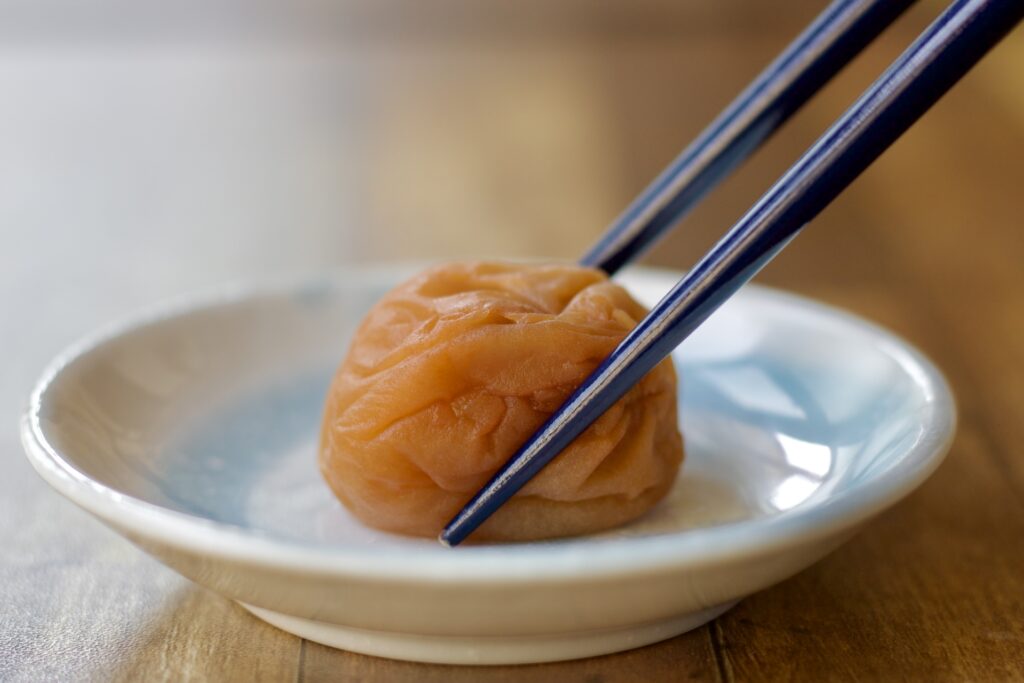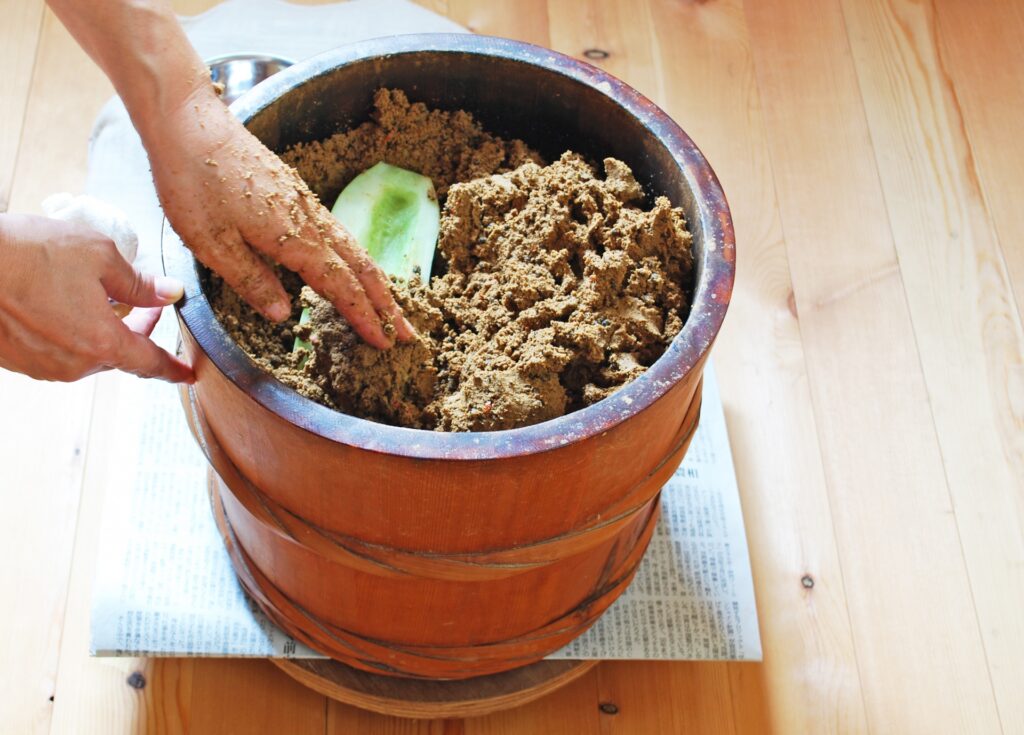Hello! This is the blog How Unique Jpanan!
At this time, I would like to introduce the Pickles in Japanese style called Tsukemono. This method of keeping the food fresh is similar to several countries’ (sinking them into a salty liquid containing salt, soy sauce, vinegar, sometimes lees from sake, or rice bran).
However, the Japanese style indeed has a long history. In some trustable theories, the origin of Tuskemono was born around 794 – 1194, known as the Heian era.

Why is Tsukemono popular in Japan?
Why did this menu become very famous in Japan? The answer is deeply concerned with the climate in Japan. The key was Humidity. We could not keep any vegetables harvested in Summer till the dry Autumn or Winter season. If someone just left the fresh food outside, the vegetable will be in such bad condition within one day or few hours!

That means the purpose of the invention (Tsukemono) is to keep any vegetables edible harvested in summertime until the winter season when crops cannot grow. So, it is for storing.
That is why the method for storing food.
How long do they remain edible?

But that must lead to some new questions. How long would they (vegetables) be kept in good condition with the method?
Amazingly, while the vegetables are in storage, in barrels or pots filled with salty water, they would keep the edible condition for 30 to 180 days (depending on the vegetable kind). It remains longer than raw ones.
It is not joking. In Wakayama prefecture, one Tuskemono shop has Salted plums (Umeboshi in Japanese). It is for 350 years.
However, if they are out of storage for meals, they cannot remain for a while. The condition would last for just one or two weeks.

Until completion, they will take several lengths of time. It depends on the kind of vegetables. Some will get ready within a half day or two days. But they are not tasteful like deep ones.
Thus, the others are usually in the stores for two to three weeks to be on the table, sometimes over six years (!).
Could you imagine the taste of the plums (Umeboshi) from over 350 years ago?
The reason why they can be tasty
The secret is lactic acid bacteria. They have the characteristic of breaking sugar molecules into Umami taste/flavor. It is a good phenomenon because we do not need to worry about the salt level in the blood, which would cause high blood pressure.
It is because the Umami flavor will work as a salty (or more tasteful) one. High Umami can be low salt.
One more fact about Tsukemono is that. Keeping them in storage with the bacteria would have made them so tasty following the time like Wine.
Some popular kinds of Tsukemono
All ingredients are mainly vegetables. They are made with turnips, eggplants, winter mermons, garlic, soybeans, or blackens.
Fun fact. Old Japanese people also preserved some fruits using the same method. *Sark in the salty water. For example, peaches and oranges follow. In other words, every vegetable can be good pickles.
Thus, in this section, let’s see some popular Tsukemono.
Asa Duke (Shallowly pickled)
It is one of the most popular Tsukemono for public dinners in Japan. As the name says, this method does not take time to get ready.
Put some vegetables in a plastic bag, and salt. Then, leave for some days or hours. Indeed, it is easy to make.
Cucumber, eggplant, Hakusai (Chinese cabbage), and any vegetable would suit this Tsukemono.

Nuka Duke (Pickled in rice bran)

At the beginning of this article, I touched rice bran. It is the Tsukemono from it.
The vegetables will be in the rice bran with water and salt boosting the lactic acid bacteria proliferation and fermentation. So, the bacteria make an Umami flavor. It is in a pot and sometimes needs to get mixed up by the hand to keep it in good condition.
It has a history. However, the time it was born is unknown because each house (almost) had kept a pot filled with rice bran (as the pickle base) in old times. Indeed. It is another famous pickle in public, still now.
At least, it became public in the Edo era, the historical theory says.
We can sink and keep the vegetables in the rice bran base for two or three days (proper time for edible). However, if it goes over one week without care, the base will get fungus on its surface, making it stinky. It is the reason it needs to get mixed.


One more fact. The bran base with care can last for nearly SEMI-PERMANENT.
It is serious. Some Japanese have kept the base over generations by the care, adding new bran and mix.
Takuan (White radish pickles)

I said all vegetables can be good Japanese pickles. However, this Tsukemono called Takuan should be for a white radish (Daikon in Japanese), making it unique.
The origin story is also a feature. The inventor was a MONK of a Japanese temple. He is Mr. Takuan (1573 – 1645). Indeed, the pickle’s name was from himself.
How do they make it? First, they (makers) cut the leaf part of the radishes. Then, hang them under the sun for two weeks.
After they dry, set them in the barrels with salt, sugar, and oryzae. The key to pickle well is weight. They always place a proper stone size on the barrel to press the radishes. It takes two or three weeks to be ready.
One more fact. The yellow color is from a flower. It is Gardenia.

It is one of the most unique Japanese pickles, Takuan.
To close
Indeed. There are many kinds of Japanese pickles around. But it is not yet. Do you know Japan has 48th prefectures? Each one shall have featured products. We call them Tokusan-hin.
So, Tuskemono is famous. If you can travel around some prefectures in Japan, try to look around some souvenir shops. You will figure out we have many variations of the pickles.
OK! It is all for this time! Thank you so much for reading the article! There are still some Japanese articles in my blog.
If you are still interested in those, visit the front page and find your catchy articles.
SEE YOU SOON FOR THE NEXT ONE!!
